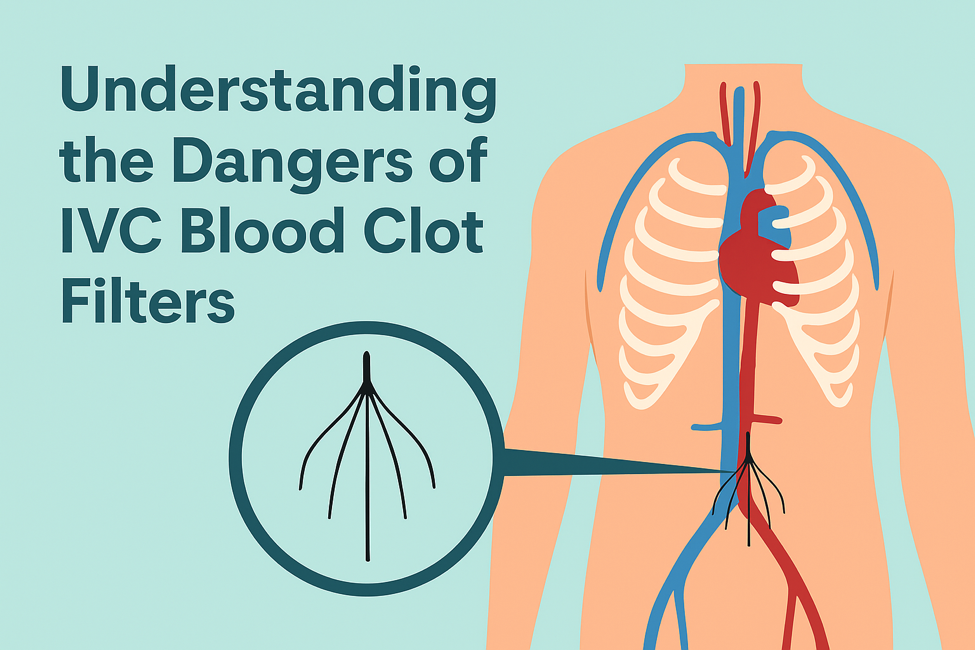
Your Health Magazine
4201 Northview Drive
Suite #102
Bowie, MD 20716
301-805-6805

More Legal and Health Articles
Understanding the Dangers of IVC Blood Clot Filters

An IVC blood clot filter is a small medical device that is put inside the inferior vena cava. This is the large vein that brings blood from the lower body to the heart. The filter is supposed to stop blood clots from getting to the lungs, but many patients have had new and major health problems because of them.
In the past few years, hundreds of patients have filed an IVC blood clot filter lawsuit after suffering complications from these devices. A lot of people claim the filters moved, broke apart, or pierced their internal organs, causing severe pain or life-threatening injuries.
Doctors, the FDA, and the public are all very worried about these reports, which make them wonder if the risks of IVC filters are greater than their possible benefits. This article will help you understand the dangers of these devices in detail.
Common Short-Term Risks During Placement
Placing an IVC filter has immediate risks, just like any other surgery. These include:
- Bleeding or infection where the catheter is put in.
- An allergic reaction to the contrast dye used in the process.
- Damage to a blood vessel from the incorrect insertion or movement of the catheter.
These risks can still happen even when the procedure is done properly, especially in patients who already have existing medical conditions.
Long-Term Complications That Can Turn Dangerous
Usually, such complications start months or years after the surgery. The U.S. Food and Drug Administration (FDA) recommends that retrievable IVC filters be removed when they are no longer needed. If you leave them in for too long, they are more likely to fail.
Here are some of the most common long-term risks:
- Migration: The filter can move from where it was before and head for the heart or lungs.
- Fracture: Pieces of the filter can break off and become sharp fragments that hurt nearby organs.
- Perforation: The filter can make a hole in the vena cava, which can cause internal bleeding or a lot of pain.
- Blockage: If the filter gets too full of clots, it can stop blood flow, which can make your legs swell or hurt.
Between 2005 and 2010, the FDA looked into more than 900 reports of problems with filters. These included cases of migration and perforation that killed people or hurt them permanently.
Signs of a Possible Filter Complication
Patients should see a doctor immediately if they experience:
- Sudden chest pain or shortness of breath.
- Swelling in the legs
- Abdominal pain that you can’t explain.
- Dizziness or a rapid heartbeat.
These signs could mean that the filter has moved or fractured, which could allow clots or even parts of the device itself to reach important organs.
Key Takeaways
- Although they can save lives, if left in for too long, IVC filters can be very dangerous.
- Long-term complications include migration, breakage, and vein perforation.
- The FDA advises to take it out when the risk of a pulmonary embolism has gone away.
- People who have an implanted filter need to have regular checkups and scans.
Other Articles You May Find of Interest...
- Understanding the Dangers of IVC Blood Clot Filters
- The Hidden Cost of a Cancer Misdiagnosis in St. Petersburg
- Understanding the Causes Behind Medical Negligence
- Warning Signs of a Spinal Cord Injury You Shouldn’t Miss After an Accident
- 7 Important Steps to Maintain Motivation After an Injury
- Understanding Pain and Suffering in Personal Injury Claims
- A Guide to Choosing a Professional and Established Law Practice














